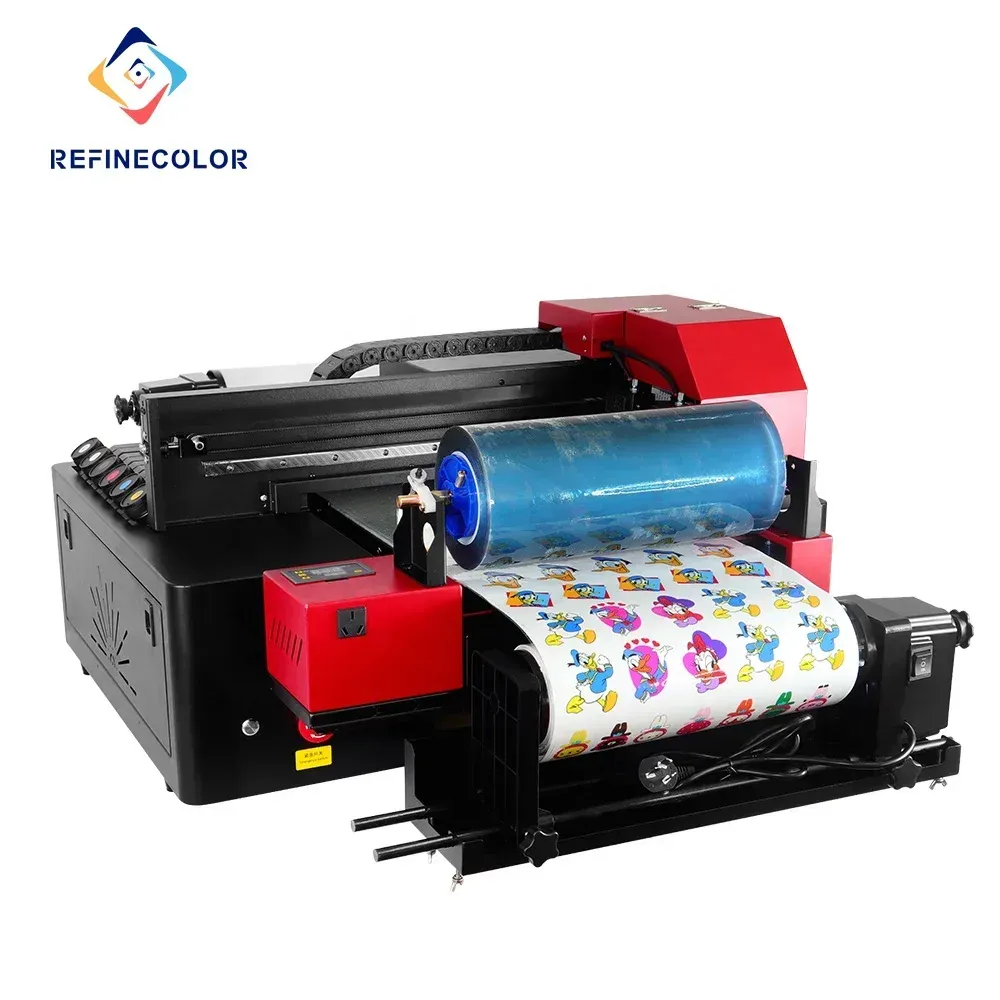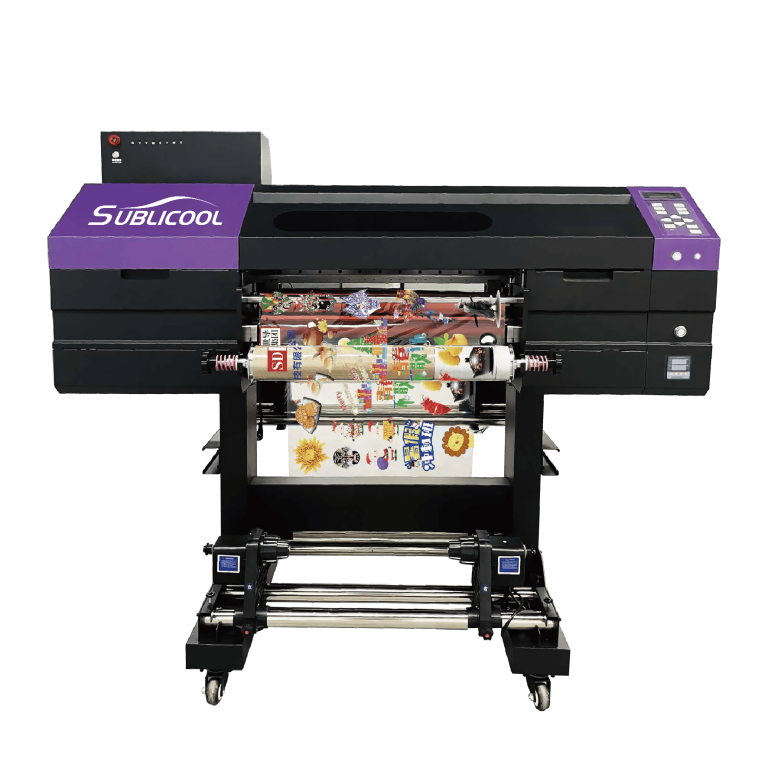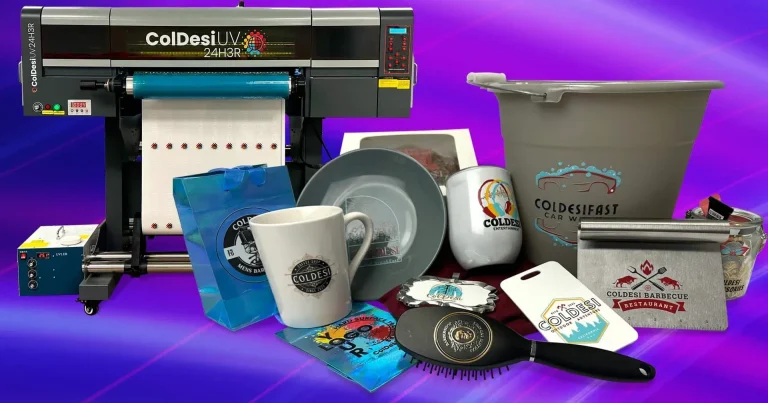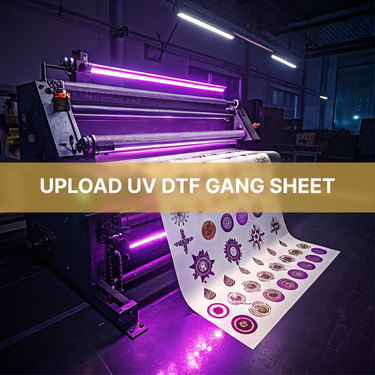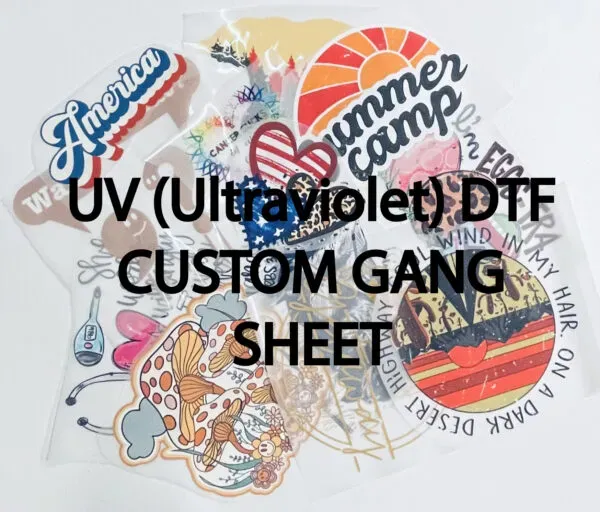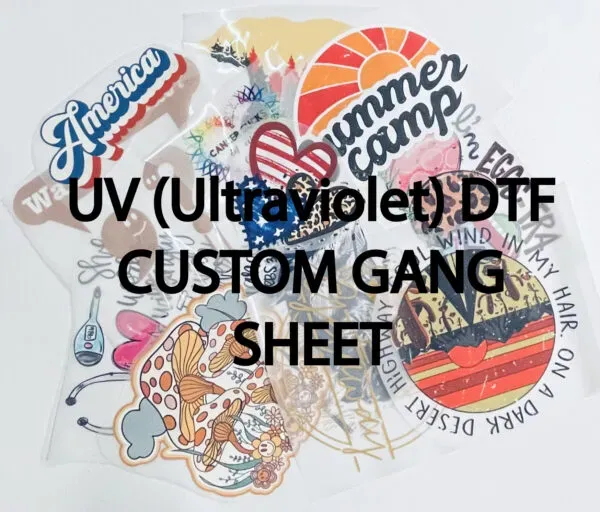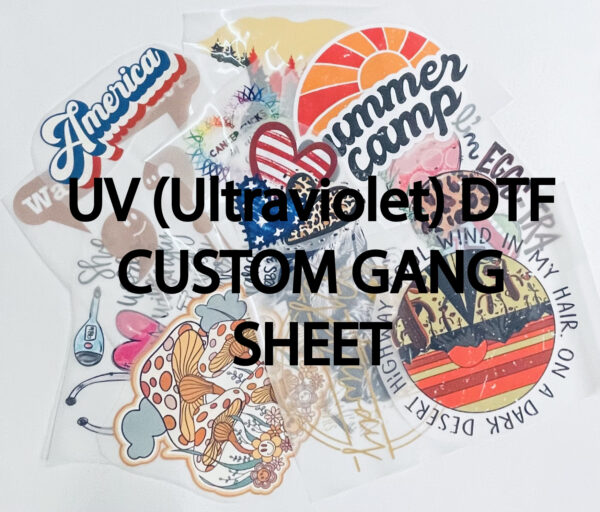UV DTF Printing: The Future of Custom Designs Explained
UV DTF printing is a revolutionary technique that is transforming the way businesses approach custom designs in the printing industry. This innovative process uniquely combines direct-to-film technology with ultraviolet curing, enabling vibrant and durable prints on a wide array of materials including textiles, wood, and metal. As consumers increasingly demand personalized products, UV printing technology has emerged as a favored solution, offering eco-friendly printing options without compromising on quality. The advantages of UV DTF printing extend beyond aesthetics, as the reduced environmental impact of its inks caters to the growing trend of sustainability. In this article, we will delve into how UV DTF printing is redefining custom printing workflows and paving the way for future advancements.
Known by various names, UV DTF printing encapsulates a cutting-edge method that merges direct-to-film techniques with UV curing. This process allows for the production of high-quality prints that are not only visually striking but also highly durable across multiple surfaces. As businesses explore new possibilities in custom printing, this technology stands out for its ability to produce intricate designs while adhering to eco-friendly printing practices. From promotional materials to personalized gifts, the applications of this printing method are vast and continue to expand. Both small businesses and larger enterprises are harnessing these advancements in UV printing technology to cater to a market that increasingly favors bespoke products.
The Advantages of UV DTF Printing for Custom Designs
UV DTF printing offers a multitude of advantages that make it a standout choice for designers and businesses seeking custom prints. One of its primary benefits is the remarkable durability of the prints produced. Unlike traditional printing methods that may fade or wear down over time, UV DTF printing uses UV-cured inks that create robust designs. This durability ensures that printed items maintain their vibrant colors and intricate details, even after extensive use. Furthermore, the technology allows for high-resolution prints, meaning that the smallest details in custom designs can be captured with precision, leaving customers satisfied with their unique products.
Another significant advantage of UV DTF printing is its versatility in substrate compatibility. This method enables printing on a wide range of materials, from fabrics and plastics to wood and metal. Such flexibility empowers creators and entrepreneurs to explore various avenues within custom printing, allowing them to offer unique items that cater to diverse consumer needs. Additionally, this adaptability reduces the necessity for multiple printing setups, streamlining operations and saving costs in the long run.
Eco-Friendly Aspects of UV DTF Printing
The printing industry has seen a rising demand for environmentally conscious practices, and UV DTF printing aligns perfectly with this trend. One of the most notable eco-friendly features of this method is the elimination of solvent-based inks. Traditional printing often involves volatile organic compounds (VOCs) that can negatively impact air quality and contribute to environmental pollution. In contrast, UV DTF printing relies on inks that cure quickly under UV light, drastically reducing harmful emissions and making it safer for both operators and the environment.
Moreover, advancements in UV DTF technology have led to improved ink formulations that minimize waste and enhance sustainability. Businesses looking to adopt green practices can readily see how this technology not only meets their operational needs but also positions them as leaders in eco-friendly solutions. As consumers become more aware of their purchasing decisions, companies embracing UV DTF printing can attract eco-conscious customers, enhancing their market appeal while contributing to a healthier planet.
Technological Innovations in UV DTF Printing
The landscape of UV DTF printing is marked by rapid technological innovations that continually enhance the capabilities of this method. Recent developments have focused on increasing the speed at which prints can be completed, allowing companies to fulfill orders more quickly without compromising on quality. For instance, new printer models now feature advanced features like automated color management systems that ensure accuracy and consistency, crucial for businesses tasked with producing high-quality custom prints consistently.
Additionally, the evolution of UV printing technology has expanded the range of materials that can be utilized beyond just paper or fabric. With advancements allowing the printing of vibrant colors on non-porous surfaces like glass and metal, businesses can tap into new markets and offer a broader array of products. These innovations not only increase product offerings but also open doors for creative designs that were previously limited by traditional printing methods, further demonstrating the potential of UV DTF printing in modern design.
Exploring Market Growth for UV DTF Printing
The demand for UV DTF printing is experiencing significant growth, driven largely by consumer preferences for unique and personalized products. Retailers are increasingly recognizing the potential for custom designs to differentiate their products in a competitive marketplace. According to recent market analyses, the global UV printing sector, including DTF applications, is projected to grow markedly over the next few years. This surge indicates a robust interest in customizing everything from apparel to promotional materials, thus creating ample opportunities for businesses invested in UV DTF technology.
This shift toward customized products is not merely a passing trend; it aligns with a deeper consumer desire for individuality and expression. As businesses evolve to cater to this need, they will likely incorporate UV DTF printing more prominently into their processes, allowing for a rapid response to emerging trends. Companies that can quickly adapt to these market dynamics through innovative printing solutions will thrive, making UV DTF printing not just a tool, but a strategic asset that can provide a competitive edge.
Applications of UV DTF Printing Across Industries
The versatility of UV DTF printing transcends various industries, marking its significance in sectors such as promotional products, interior design, and packaging. The capacity to print vivid colors and intricate designs onto a multitude of surfaces vastly enhances the potential for customized offerings. For example, in the promotional products arena, businesses can leverage UV DTF technology to create unique giveaways that resonate with their branding, thereby elevating their market presence.
In addition to promotional applications, UV DTF printing is making waves in the interior design space. Custom wallpapers, decorative tiles, and personalized artwork are becoming increasingly popular as consumers seek to create individualized living environments. The ability to produce highly detailed prints on different materials means that designers can express creativity without limitations, resulting in exceptional products that cater to the evolving tastes of homeowners and renters alike.
Future Prospects of UV DTF Printing
Looking forward, UV DTF printing is poised for a transformative future, likely enhancing its integration with digital workflows and automation. As technology advances, we can expect to see printers equipped with sophisticated software that allows for on-demand printing, enabling businesses to respond agilely to changing consumer needs. This potential for customization at scale can revolutionize how companies approach inventory and product variety, minimizing waste and maximizing efficiency.
Furthermore, the anticipated improvements in UV DTF printing will likely lead to the emergence of new markets and applications. For instance, as techniques improve, we might witness the expansion of UV DTF into areas such as automotive or architectural designs, where durable and intricate prints are essential. The continued innovation in this space signifies not only an evolving landscape for custom printing but also a promising pathway for businesses to stay ahead in a competitive market, ensuring the sustained relevance of UV DTF printing.
Frequently Asked Questions
What is UV DTF printing and how does it work?
UV DTF printing, or UV Direct to Film printing, is a modern method that allows for the direct printing of high-resolution images onto a special film that can be transferred onto various materials. Utilizing UV printing technology, this method employs specially formulated inks that cure instantly when exposed to UV light, creating durable prints that adhere well to substrates like textiles, wood, glass, and metal.
What are the environmental benefits of UV DTF printing?
UV DTF printing is considered an eco-friendly printing option because it uses UV inks that do not emit harmful VOCs, unlike traditional solvent-based methods. This reduces air pollution and aligns with sustainable practices, making it a preferable choice for businesses focusing on eco-friendly printing solutions.
What types of materials can UV DTF printing be used on?
One of the biggest advantages of UV DTF printing is its versatility. It can be used to create custom designs on a wide range of materials, including textiles, wood, glass, metal, and more. This adaptability allows businesses to cater to different industries and produce durable prints tailored to specific customer needs.
How does UV DTF printing compare to traditional printing methods in terms of durability?
UV DTF printing is renowned for producing durable prints. The UV inks cure quickly and adhere strongly to substrates, resulting in designs that are resistant to fading, scratching, and weathering compared to traditional printing methods. This durability makes UV DTF an excellent choice for products that require long-lasting quality.
What industries benefit the most from UV DTF printing?
UV DTF printing serves a broad spectrum of industries, including fashion, promotional products, interior design, signage, and packaging. Its ability to create vivid colors and intricate custom designs makes it an ideal solution for businesses looking to offer unique and personalized products across various markets.
What is the future of UV DTF printing in the custom designs market?
The future of UV DTF printing in the custom designs market looks promising, with anticipated growth driven by the rising demand for personalized products. Continuous innovations in UV printing technology, such as automation and integration with digital workflows, will enhance customization capabilities, enabling businesses to compete effectively and meet evolving consumer preferences.
| Key Points | ||
|---|---|---|
| Understanding UV DTF Printing | Uses UV inks for durability | Prints on diverse materials (textiles, wood, glass, metal) |
| Key Developments | Technology advancements for speed and efficiency | Environmentally friendly, with reduced emissions |
| Market Growth | Increasing demand for unique products | Expansion projected throughout the decade |
| Applications Across Industries | Used in promotional products, signage, packaging | Flexibility boosts profitability |
| Future Prospects | Integration with digital workflows | Potential for on-demand solutions |
Summary
UV DTF printing is revolutionizing the custom designs landscape, offering immense possibilities for creative applications. This innovative technology not only enhances print quality and versatility but also presents eco-friendly advantages, making it appealing to environmentally conscious businesses. As market demand continues to grow, UV DTF printing is positioned to become a staple in various industries, enabling companies to create unique and personalized products for consumers. Its future looks bright, promising continued advancements in technology that will further empower businesses to stay competitive and responsive to market trends.

